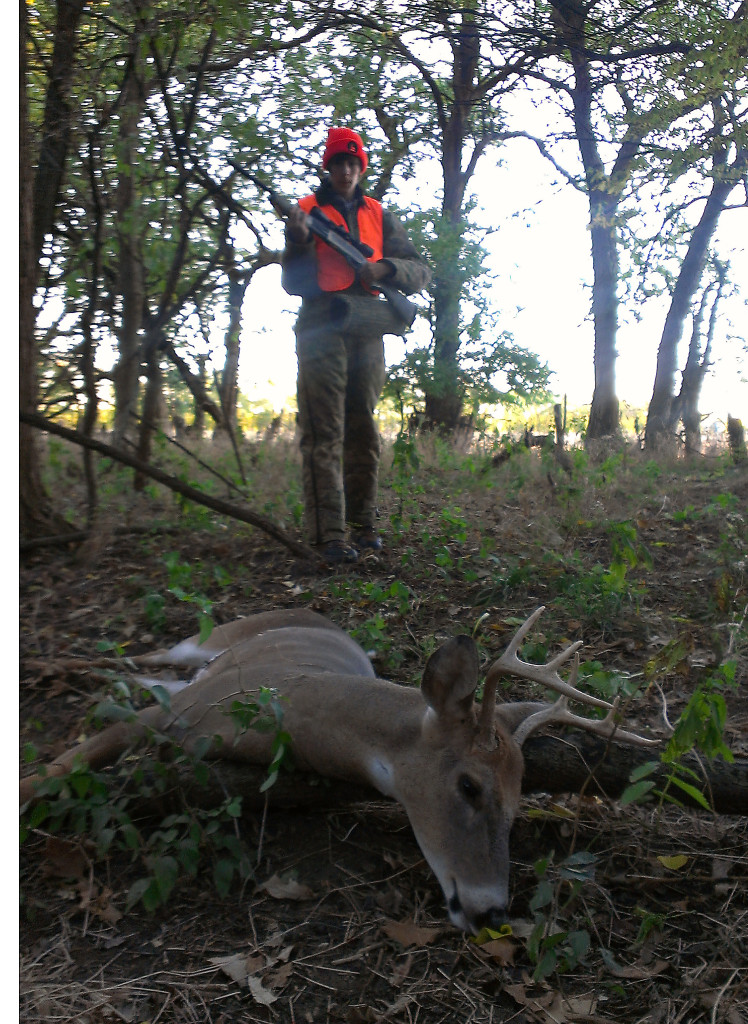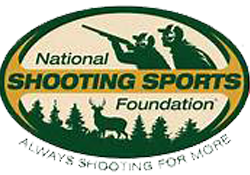The Science of Tracking Wounded Deer – 5 Good Blood Trailing Tips
Tracking a wounded deer is more like forensic science or an exercise in CSI than it is an art form as some people think. By understanding how an animal bleeds from different wound types, you can better recognize blood trails after each shot. But in order to successfully recover each deer, you need to utilize many tactics that result in a recovered animal. Blood trailing is something that isn’t taught, but it’s one of the many important skills to master if you plan to hunt deer. Here are a few great practices. Some of these are the old standards that you’ve heard a hundred times, but there are a few additional tips that might just help…
1. Remember where the animal was shot in the field or timber. I mean KNOW and remember exactly where the animal was standing in the field or timber. This is a critical part of the process— if you can’t find where the deer was standing, you may not be able to find the point of impact, or where the blood trail begins. Try to pick up on a distinct tree or bush. It’s incredibly difficult to do when your focus is 100% on the deer, as it should be. But after the shot and before you change position or move, shift your focus back to where the deer was standing. Then burn those landmarks into your mind, because when you get down, it will look different than it did from your treestand. Many hunters lose deer simply because they are looking for the blood trail in the wrong spot.

So use a tree, rock, or any other reference point so when you climb down from the tree, you can move on to the next step…
2. Find the point of impact. It’s paramount to know where the deer was standing so you can go there and find the point of impact, or the point at which the arrow or bullet struck home. Look for the blood spatter, flesh, or hair. There will often be some kind of sign that you hit the deer like blood or hair. But if you don’t find any, follow the tracks or the direction you last saw it. Sometimes they won’t start dropping blood for 30 yards or more. But usually there are at least a few drops of blood at the point of impact.
3. Locate that first drop of blood and let the detective work begin.
Once you find blood or hair then calm down, move slowly, and focus. Your adrenalin will be pumping and you will be eager to find that deer, but take your time. Also, walk to the side of the blood trail, not right on top of it. In case you have to come back to find the trail, you don’t want to obliterate it by walking on it and covering up evidence. It’s also a good idea to keep an eye up and check ahead of you from time to time. I’ve had wounded deer jump up in front of me. If your nose is to the ground, you might miss a follow-up shot opportunity.
.
4. Mark the last spot of blood. If you lose the blood trail, mark the last spot of blood (by tying a ribbon on branch, or sticking your arrow in the ground). then start a back and forth arc in front of you based on the last known direction of the animal. Only result in “circles” if that does no pan out. Very rarely will a deer stop and turn in the exact opposite direction. So by moving the direction the deer was moving, in ever expanding arc or semi-circles, you are trying to locate that next drop of blood to get back on the trail.
5. If blood is not on the ground, look on trees and shrubs. It’s possible the wound has coagulated or plugged up where it is not dripping on the ground, but the hair might be coated with it so if it rubs up against brush it may leave blood.
SOME NEW TRICKS…
One great tactic that I have share with new hunters is to “reverse track”. In other words, after you have found the animal, track the blood trail backwards towards the point of impact. This is a great exercise if you have the time.
Then STUDY to blood trail, especially if it’s not too long, after you identify the cause of death. For example – was it a heart shot, lung shot, or liver hit? Once you know that, go back and look at the blood trail and study it. Make a note at what point the most blood poured out of the wound. Did is spray, pump, or dribble? Heart shots typically “pump” out a fist sized wad of blood. Lung shots typically “spray” fine mist of blood especially if it’s a pass-through shot, with two wound holes in the deer which could leave two blood trails. Another sign of a lung-shot deer is actual lung tissue. It’s a very light pinkish red, with spongy pieces of lung that you will find along with the blood trail. A double-lung shot deer typically does not travel very far (less than 150 yards) and often leaves a very distinguished blood trail, which is why so many hunters strive for the “double lung” shot.
Look for changes in the blood drop pattern. If it’s been a steady trail, then a large pool, that may indicate the deer stopped or even laid down. That usually a sign that it’s not a vital hit and the deer will keep moving. Best bet is to mark that spot, and pull out and regain tracking the next day. I have also noticed that a deer will start to “stagger” before it expires. So a staggered or zigzagging trail could indicate you’re getting close.
If you lose the blood trail, I usually continue in the direction the deer was heading, and try to pick up the trail again. More often than not, they continue on the path and do not make a major change in direction. But if it’s dark, you might want to tie a ribbon (or mark your GPS with a waypoint) and leave it alone for the night, then come back and continue in the daylight.
Another challenge is rain. Heavy rain can wash away a blood trail within an hour or sooner. I’ve recovered deer in the rain, but they were lethal shots and I started tracking immediately after the animal left my sight. Another misconception is that tracking in snow is easy. Actually it can be more challenging. In soft fresh snow, the hot blood coming from the deer melts right through the snow and doesn’t leave a visible trail. If the snow is old and crusted over, then the blood will spatter on top and yes, that is much easier to follow. But fresh soft snow makes it more challenging. The advantage is that the tracks make it a lot easier to trail the deer, provided it doesn’t join a herd or even 2 or 3 more deer.
Having killed close to 80 deer in my life, I’m not sure if any of them have left the same kind of blood trail. To become an expert tracker, you need to put on your CSI hat and treat your blood trail like a crime scene. By studying the blood trail of every deer that you harvest, you will become more proficient at recognizing the lethality of your shot before you find the animal. This can be a huge factor in determining if you do indeed have a good lethal hit and knowing the animal isn’t far, or knowing that you have a bad hit, and it’s time to back off and not push the animal.
Lastly, the good old “wait 20 minutes before tracking your deer” rule is still the golden rule. It gives the deer time to expire and it gives you the time to calm down from the adrenaline rush and focus on the task at hand. Practice these tactics and you will ultimately become a better tracker and put more meat in the freezer.
Recovering your game is not only ethical, it’s an obligation. Not trying to find a wounded animal is known as “wanton waste” and is actually illegal in many states. But you owe it to that animal, and yourself as a steward of the outdoors, to do everything in your power to recover each and every animal that you hit while hunting. If you don’t know how to track, trail, and recover deer, you have no business in the woods. If you hunt long enough, you will most likely wound a deer and not recover it. Hopefully that never happens and it should be the goal of every hunter to never have that happen. It’s wounded (and not recovered) deer that give anti-hunters ample reason to argue against hunting. So it’s our duty to strive to find every animal.
Here’s a video of me tracking down a heart-shot doe. With a gaping wound, she gushed out a massive amount of blood with every heart pump, or about every 5 feet, which is typical when you get a good heart shot on a deer. A heart-shot deer will expire in roughly 8-15 seconds, so they often will cover as much ground as they can before succumbing to death, usually that’s within 100 yards. WARNING! This is graphic, do not watch this if you can’t handle the sight of blood.



















